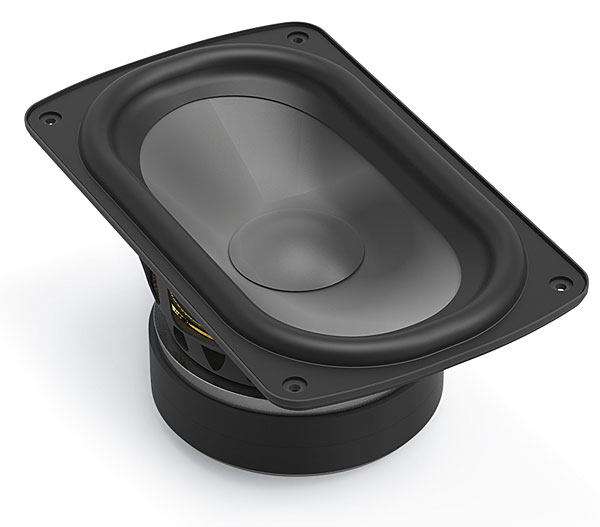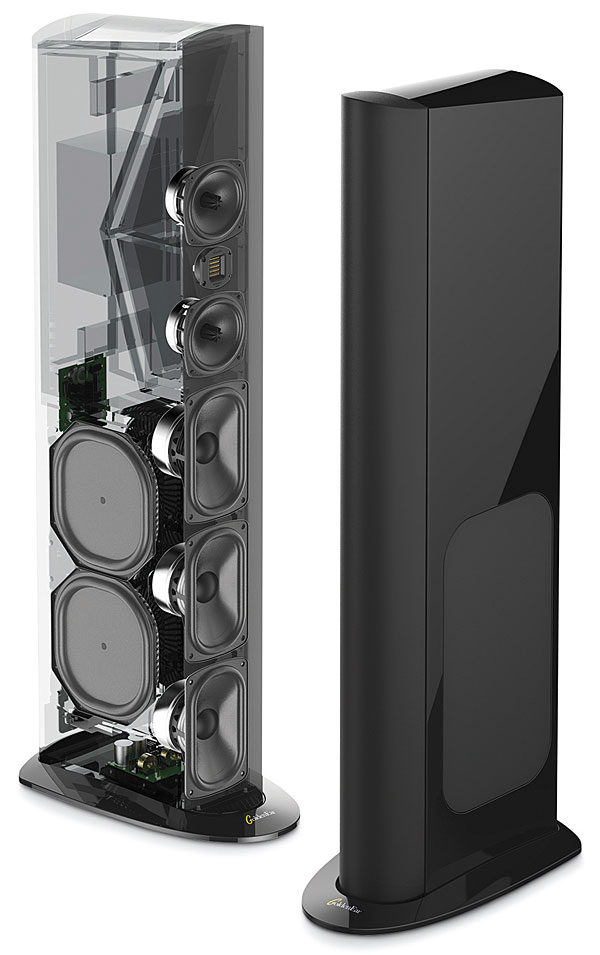GoldenEar Technology Triton Reference Loudspeaker Review Page 2
All good, right? One thing I left off that list is coherency—something I’d imagine is a particular challenge to achieve in a tower with a built-in subwoofer. The sound doesn’t seem to have anything missing from it, and in all the Tritons I’ve heard, the various frequency ranges flow together in a seamless manner.

All of these qualities were in evidence with the Triton Reference, and then some. When I listened to a CD cut of jazz man Charles Lloyd’s take on the traditional ballad “The Water Is Wide,” his saxophone sounded finely textured, full, and afloat in threedimensional space. Drums had an expansive, larger-than-life quality, with the shimmer of brushed cymbals expanding far into the horizontal and vertical planes. Meanwhile, the warm, liquid tone of Brad Mehldau’s piano came across intact, and Larry Grenadier’s standup bass displayed excellent extension and enough definition that I could visualize the strings being plucked.
Needing to hear more jazz, I played another CD cut, “Alabama,” from In Movement by Jack DeJohnette with Ravi Coltrane and Matthew Garrison. DeJohnette’s deft cymbal rolls sound crisp and airy on this track, and the Reference rendered them in a way that revealed the cymbals’ fine attack and decay as his sticks wandered from high-hat to ride and back again. Coltrane’s sax, too, came through with a palpable sense of air and ease as he ripped through the high registers of his instrument while running scales.
To get a quick sense of the speaker’s dynamic capabilities and see how it rendered a distinct female voice, I checked out a Tidal stream of “Under the Boardwalk” from Rickie Lee Jones’ 1983 EP, Girl at Her Volcano. The Reference easily fleshed out the multiple vocal lines in the song’s quiet beginning, and when Rickie Lee’s voice started to take flight in the second verse, it sounded clear, unstrained, and utterly compelling. But what really captured my attention on this studio-perfect track was the ability of the Reference to realistically convey percussion: The one-two punch of snare and kick drum as the chorus transitioned into the second verse had a thunderous quality that literally pushed me back into my chair.
OK, so the Triton Reference excelled at reproducing demo-quality tracks, but what about other sorts of music? I first went to composer Max Richter’s Three Worlds: Music from Woolf Works and selected the chamber piece “In the Garden” from the opening section, Mrs. Dalloway. Here, the speakers conveyed a vivid sense of depth, with the piano in the background and the strings up front all delivered in distinct layers. The overall sound was rich, with details such as the texture of a bow scraping across a cello in the track’s climax creating a heightened sense of realism.
Listening to a Dean Martin track, “Fools Rush In,” from a CD that Gross used for the speaker’s unveiling at the Consumer Electronics Show, I was struck by the full, three-dimensional, and textured quality of the singer’s voice; I could even hear his intake of air before the next silkily crooned line was emitted. As I sat in the sweet spot, Martin’s vocal floated perfectly between the pair of speakers. When I moved to an off-center seat on my couch just to see how the Reference delivered from off axis, the holographic center image lost some solidity, but both the basic tone and the fullness of his voice were retained.

The last time I reviewed speakers for Sound & Vision, I found myself repeatedly spinning Pink Floyd’s “Us and Them” to gauge the contribution of a fairly potent 15-inch subwoofer in the system I was testing. This track is mostly mellow, but then there’s that explosive chorus, where everything but the kitchen sink—and possibly even that—is tossed into the mix. When I listened to it with the Triton Reference towers, the chorus sounded massive and dynamically unhinged. It was as if a sonic tsunami was hitting the room. GoldenEar specs bass extension on the Reference as flat to 20 hertz and below in-room, and hearing this track gave me no cause to dispute that. More to the point, the bass was full and powerful enough that any question of needing an external subwoofer to supplement the pair’s performance in my listening space was put to rest.
For my final test, I moved the speakers to my home theater— no easy task, considering their substantial weight. There, they anchored an all-GoldenEar system, with a SuperSat 50C for the center speaker and a pair of Triton Twos used as surrounds. Amp power to each speaker was 120 watts. When I watched the scene from Star Trek: Beyond where Kirk decides to abandon ship after being attacked by Krall and his troops, the Reference vividly conveyed the swells of sad music as the Enterprise locked in with the alien planet’s gravitational pull. The sound of escape pods being jettisoned had a powerful envelope, and when the ship finally careened into a canyon on the planet’s surface, the thunderous impact clearly demonstrated how well suited the speaker’s subwoofer section is for movies.
Referencing the Reference
It’s often said that GoldenEar speakers sound as good as, if not better than, models costing 10 times as much. To give that notion a reality check, I made a point of visiting a high-end audio shop during my evaluation period to listen to speakers that actually do cost 10 times as much as the Triton Reference. (A shout-out to Speaker Shop in Amherst, New York, for providing the access—and apologies for making you listen to The Dark Side of the Moon.) Hearing my reference tracks on those überexpensive speakers (which, of course, were attached to über-expensive amps), I was surprised at how well the Reference compared. Were there differences?
Yes. Imaging with the $85,000/pair speakers was stunningly precise, and their sound had an effortless, rock-solid quality that caused the towers to completely disappear from the room. But many of the qualities I heard with that system—transparency, nimble dynamic contrasts, top-to-bottom cohesiveness—were in evidence when I returned home and listened with the Reference. Was I still happy? Absolutely!
Pure Pleasure
One thing that often gets lost in audio equipment reviews is the fun factor: Did the reviewer enjoy listening to music with this or that component? The detailed, dynamic, and full-range sound put out by the Triton Reference had the effect of turning me into a music junkie (that audio crack thing I mentioned earlier). I’m a regular music listener, but once I had the Reference up and running, I found myself wanting to do little else. Blu-rays, Netflix, the internet, exercise—it all went by the wayside, and I found myself sitting up late, night after night, playing music. I also invited non-audiophile friends and neighbors over to listen, blowing numerous unsullied minds in the process. And when I mentioned how much the Reference costs, not one person blinked. To them, $8,500 for a pair seemed a fair price for such excellent sound.
What to do next after creating a speaker called the Reference? I’m sure that Gross and his engineering team will find plenty to do to keep busy. For now, though, they’ve earned fair rights to rest a while on their laurels. If true reference-quality performance at a very fair price was the goal here, GoldenEar Technology has succeeded in a huge way.
























































